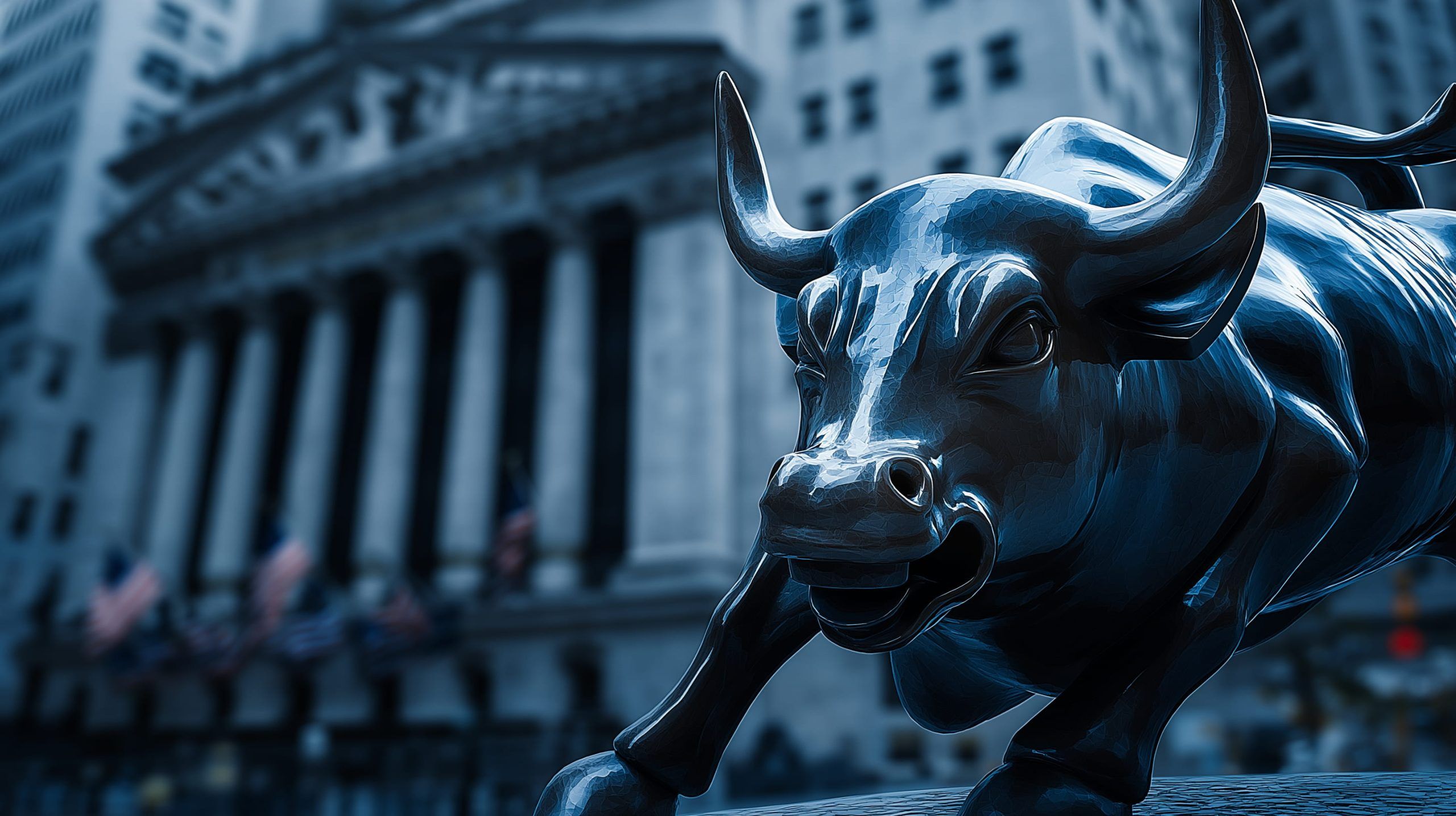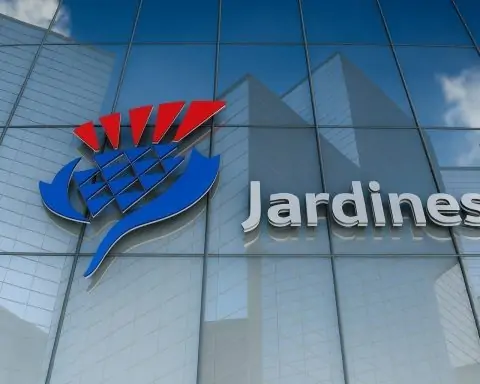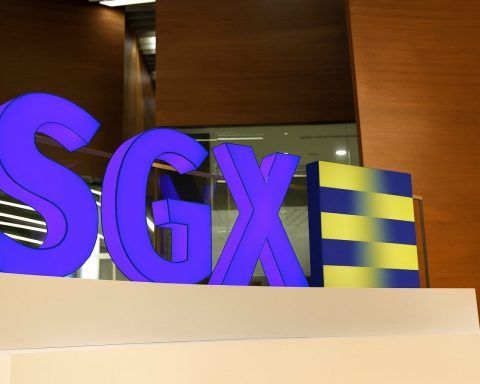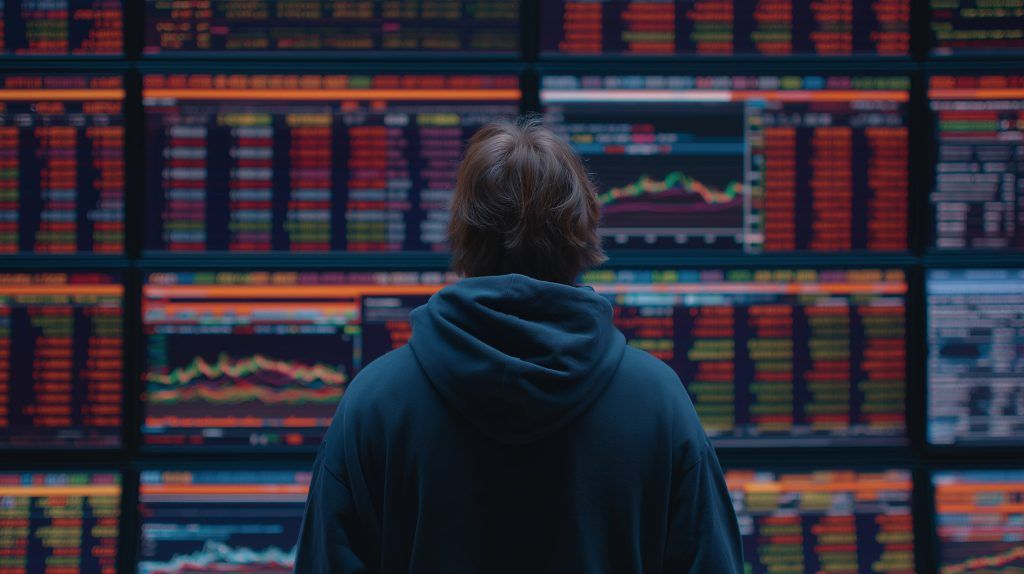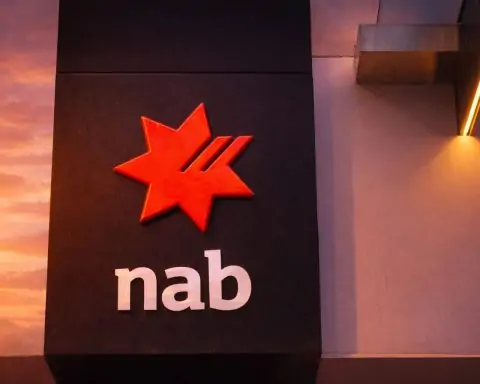Key Facts:
- Indices: On Sept 29 most European markets were higher. The Stoxx 600 rose 0.18% to 555.53, Germany’s DAX 40 was up 0.02% to 23,745, and the FTSE 100 gained 0.16% to 9,299.84 [1]. Only Italy’s FTSE MIB (-0.22% to 42,554) and Spain’s IBEX 35 (-0.22% to 15,316) fell [2].
- Economic Data: Euro-area economic confidence unexpectedly ticked up to 95.5 in September, beating forecasts [3]. German import prices eased 1.5% year-on-year in Aug, underscoring softening inflation [4].
- Sector Winners/Losers: Healthcare and luxury stocks led gains. The STOXX healthcare index and luxury index climbed (luxury +1.9%) [5]. Gold and metal prices hit records, lifting miners (+1.7%) [6]. Conversely, banks fell (~–1.1%) and energy stocks slid (oil roughly –2%) [7], dragging indices.
- Top Movers: GSK jumped ~2.2% on a CEO change announcement [8] and AstraZeneca added ~1% on NYSE-listing plans [9]. UCB (Belgian pharma) hit a record high after rival data [10]. Carnival’s shares plunged ~4.5% despite upping profit forecasts [11]. German carrier Lufthansa said it will cut 4,000 admin jobs by 2030 [12].
- Analyst Views: Traders are eyeing the looming U.S. shutdown deadline. “Markets appear to be shrugging off” shutdown risk, noted Mark Malek of Siebert Financial [13], but Citigroup analysts warned a shutdown by Oct. 1 is still likely [14]. A shutdown could delay key U.S. data (e.g. Friday’s payroll report) and add volatility.
- Currencies & Bonds: Safe-havens surged. Gold hit a new record (~$3,800/oz) and the dollar slipped; EUR/USD traded around $1.17 [15]. U.S. 10-year yields dipped near 4.14% [16] on risk aversion. Lower yields and a weaker dollar helped support European equities as well.
- Outlook: Investors focus on upcoming US data (September jobs, Fed speakers) and eurozone inflation prints. Goldman Sachs forecasts the STOXX 600 will rise ~5% over the next 12 months [17], though a stronger euro is a drag. Analysts caution that selectivity is key in this late-cycle market environment.
Indices Performance
European markets closed the first day of the week with small gains. The pan‑European STOXX 600 edged up 0.18% to 555.53 [18]. Germany’s DAX 40 barely budged (+0.02%) to 23,745.06 [19], while Britain’s FTSE 100 added 0.16% to 9,299.84 [20]. France’s CAC 40 rose 0.13% to 7,880.87. By contrast, Italy’s FTSE MIB and Spain’s IBEX 35 both fell about 0.22% on the day [21]. Across the Atlantic, U.S. stock futures were little changed, reflecting caution ahead of key U.S. developments.
On Tuesday Sept. 30, markets opened cautiously. Euro Stoxx 50 futures were slightly lower (off ~0.07%) [22], and Germany’s DAX futures were marginally down. Traders awaited fresh data – including eurozone flash inflation and UK growth – and the outcome of U.S. budget talks. (UK GDP growth for Q2 was confirmed at +0.3% year-over-year on Sept. 30 [23], little changed from forecasts.)
Chart suggestion: A table of major European index closing values and % changes for Sept. 29–30 (FTSE, DAX, CAC, IBEX, Stoxx 600) would illustrate regional market performance.
Economic Data & News Releases
Markets were nudged by a mixed set of economic signals. In the euro area, an economic confidence index unexpectedly rose to 95.5 in September (above consensus), suggesting slightly better sentiment [24]. German import prices fell 1.5% y/y in August [25], pointing to easing inflationary pressures. Such softer inflation data provides room for the European Central Bank (ECB) to remain accommodative if needed.
Elsewhere, British data was uninspiring: the UK economy grew 0.3% in Q2 2025 [26], roughly as expected. Key eurozone inflation figures were due on Oct. 1 (flash September CPI from Germany and France) and would be in focus, but on Sept. 30 markets were largely preoccupied with external factors.
On the corporate front, German airline Lufthansa announced a plan to cut 4,000 administrative jobs by 2030 [27] as part of a digital efficiency drive. This weighed on travel and transport stocks. In banking news, Germany’s Commerzbank slid roughly 3%, reflecting concerns over weaker European bank earnings [28].
Sector and Company Highlights
Sector-wise, defensive and cyclical winners diverged sharply. Healthcare and luxury stocks led the charge. The STOXX healthcare sector climbed about 0.9% [29], lifted by strength in big names like GSK and UCB. UCB’s shares hit a record high after a competitor’s positive data [30]. In London, GSK jumped ~2.2% on news that CEO Emma Walmsley will step down [31]. Mining and tech stocks also outperformed (European miners +1.7%, tech +1.1%) [32], as bullion and copper prices surged on global risk-off flows. The luxury index (including firms like LVMH and Richemont) gained ~1.9% [33], bouncing back from earlier losses.
By contrast, financials and energy underperformed. The eurozone banks index fell about 1.1% [34]. Spain’s banking sector dragged its IBEX index lower (IBEX close –0.22%). U.K. insurers and commodity-linked stocks were also weak. Energy shares slid after a drop in oil (~2% fall in crude) [35]. As a result, commodity-sensitive mining outlays were mixed – gold miners (like Fresnillo) rallied on record gold prices, but oil majors dipped with Brent crude.
Notable individual movers included: AstraZeneca, up ~1% on plans to list directly on the NYSE [36]; Carnival (UK-listed cruise operator), which fell ~4.5% despite raising its full-year profit outlook (investors took profit on the news) [37]; Genmab (Danish biotech), which finished flat after earlier declines when it agreed to an $8bn acquisition deal [38]. In Italy, Banco BPM and other lenders nudged the FTSE MIB slightly down with modest losses.
Sector performance chart: A bar chart or heatmap of sector returns for Sept. 29 (health +0.9%, luxury +1.9%, banks –1.1%, energy –0.5%, etc.) would clarify which industries drove the moves.
Analyst Commentary and Sentiment
Commentators noted the curious calm despite looming U.S. political risk. Mark Malek, CIO at Siebert Financial, observed that “so far, markets appear to be shrugging off the high possibility of a [U.S. government] shutdown… betting that an agreement will be reached in short order with minimal disruption” [39]. Indeed, European markets had continued to rally in September amid easing U.S. policy – Fed funds had been cut 25 bps at the start of the month, and rate-cut bets remained firm.
However, not all were sanguine. Analysts at Citigroup warned that an October shutdown was still likely [40], which would delay key U.S. data releases (starting with Friday’s nonfarm payrolls). This risk kept a lid on gains. As Citigroup noted, delays in labor data could “muddy” Fed policy timing.
Other experts see continued relative strength for Europe but urge caution. A July report from Goldman Sachs (cited in Sept) expected the STOXX 600 to rise roughly 5% over the next 12 months [41], driven by modest growth and shareholder payouts. However, Goldman warned that a stronger euro (projected near 1.25/$ by late 2026 [42]) could dampen earnings. As Sharon Bell of Goldman wrote, “Selectivity is key” in what is now a higher-valuation environment [43].
Madeleine Ronner of DWS Asset Management (Reuters interview, July) argued that U.S. valuations may be “risky” and noted European earnings were picking up, implying “valuations gap” could narrow [44]. Others pointed out that European corporate fundamentals look more resilient than feared, and that investors are beginning to rotate into undervalued European sectors. Overall, analysts suggest a cautious tone into October, watching both central bank rhetoric and geopolitical events.
Geopolitical and Global Factors
The dominant macro theme was the U.S. fiscal impasse. President Trump met Congressional leaders on Monday, but without a deal, a partial shutdown of U.S. federal agencies would begin on Wednesday (Oct 1). Historically, U.S. shutdowns have had limited market impact, but this one arrived at a peak in risk assets, prompting anxiety. Safe-haven demand sent gold to new highs and lifted bond bids. Asian markets (e.g. Nikkei, Shanghai) were mixed on Sept 30: Japan reported a steeper-than-expected factory output drop [45] while China’s manufacturing PMI barely climbed within contraction zone (official PMI 49.8) [46], underscoring global growth worries.
Trade tensions also lingered. Trump announced new tariffs (100% on foreign-produced films, etc.) effective mid-October, adding to global uncertainty [47]. On the European front, the ECB’s Lagarde last week hinted rate cuts could come next year, but with euro inflation easing, markets judged the ECB close to a pivot. Energy prices fell slightly on inventory data, weighing on oil stocks. Currency markets were notable: the U.S. dollar index dipped, pushing the euro up around 0.2% on Monday [48]. The euro briefly traded near $1.1730 as of London close [49], before edging back. This currency effect will slim European exporters’ profits if sustained.
Currencies and Bonds
Currency moves reflected the risk-off tilt. The dollar weakened broadly – for example, EUR/USD rose about +0.2% to 1.1726 on Monday [50]. That extended a rally that took the euro over $1.17, fueled by safe-haven flows and relative central bank paths. In turn, the euro rally puts modest headwinds on EU stocks (exporters earn less in euro terms) but boosts domestic demand.
In bond markets, U.S. Treasuries rallied as equities wavered. The 10-year U.S. yield slipped toward 4.14% [51]. Euro-area yields followed suit, with benchmark German Bund yields easing slightly. Commentators noted that if a shutdown delays data, Treasury yields could fall further before Friday’s payrolls report. The risk rally also lifted gold: spot gold topped $3,800/oz for the first time [52]. Oil prices fell ~1% on Wednesday morning (Oct. 1), putting pressure on energy shares.
Data table: A table of closing levels and percentage change for EUR/USD, Brent crude, and major bond yields on Sept. 29–30 would illustrate the currency/bond interplay.
Short-Term Forecasts
Looking into October, analysts emphasize data flow and central bank clues. The U.S. nonfarm payrolls report (now Fri Oct 4) is crucial. Any further Fed easing or dovish signals (Fed speakers due this week) could buoy risk assets; conversely, weak data delayed by a shutdown may mute market moves. In Europe, a raft of flash inflation numbers (Sept CPI) on Oct 1 will set expectations for ECB action. Bank of England forecasts and Labour Party conference could shake UK assets.
Institutional forecasts vary. Goldman Sachs (Sept 3) reckons a modest rally in European stocks: “GS Research forecasts the STOXX Europe 600 will rise about 5% to 580 over the next 12 months” [53], implying limited upside. Others are more tactical, noting that year-end portfolio rebalancing (“window dressing”) is in progress. IG analysts pointed out that funds often buy winners into quarter-end, which may explain some late-September strength.
Overall, the near-term outlook is mixed. If the U.S. budget crisis is resolved quickly, markets could rebound – if not, volatility may spike. As one strategist said, “Europe’s outperformance may need a rest,” but for now investors are cautiously optimistic, betting on continued low rates and earnings resilience. In this environment, many observers advise focusing on sectors with solid balance sheets (tech, consumer staples) and stocks with strong dividends or pricing power.
Chart suggestions: To aid clarity, one could include (a) a line chart of the Stoxx 600 vs. S&P 500 for September, (b) a bar chart of sector returns on Sept 29, and (c) a table summarizing index closing values & % changes (Stoxx 600, FTSE, DAX, CAC, IBEX, FTSE MIB) for Sept 29–30. These visuals would highlight which markets and sectors drove the moves.
Sources: Market moves and data from Reuters and Anadolu Agency [54] [55] [56] [57] [58], with expert quotes as cited.
References
1. www.aa.com.tr, 2. www.aa.com.tr, 3. www.aa.com.tr, 4. www.reuters.com, 5. www.reuters.com, 6. www.reuters.com, 7. www.reuters.com, 8. www.reuters.com, 9. www.reuters.com, 10. www.reuters.com, 11. www.reuters.com, 12. www.aa.com.tr, 13. www.reuters.com, 14. www.reuters.com, 15. www.reuters.com, 16. www.reuters.com, 17. www.goldmansachs.com, 18. www.aa.com.tr, 19. www.aa.com.tr, 20. www.aa.com.tr, 21. www.aa.com.tr, 22. www.reuters.com, 23. www.reuters.com, 24. www.aa.com.tr, 25. www.reuters.com, 26. www.reuters.com, 27. www.aa.com.tr, 28. www.reuters.com, 29. www.reuters.com, 30. www.reuters.com, 31. www.reuters.com, 32. www.reuters.com, 33. www.reuters.com, 34. www.reuters.com, 35. www.reuters.com, 36. www.reuters.com, 37. www.reuters.com, 38. www.reuters.com, 39. www.reuters.com, 40. www.reuters.com, 41. www.goldmansachs.com, 42. www.goldmansachs.com, 43. www.goldmansachs.com, 44. www.reuters.com, 45. www.reuters.com, 46. www.reuters.com, 47. www.reuters.com, 48. www.aa.com.tr, 49. www.aa.com.tr, 50. www.aa.com.tr, 51. www.reuters.com, 52. www.reuters.com, 53. www.goldmansachs.com, 54. www.aa.com.tr, 55. www.reuters.com, 56. www.reuters.com, 57. www.reuters.com, 58. www.goldmansachs.com
